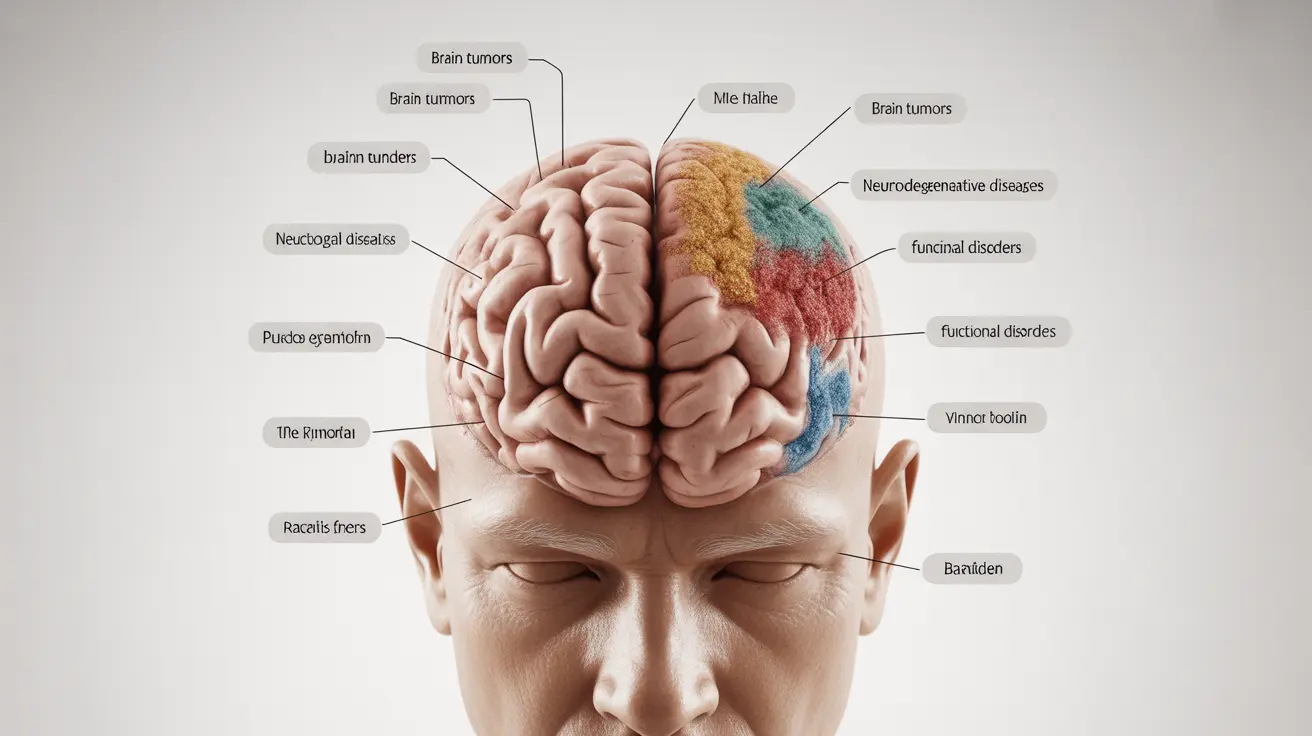Brain disorders encompass a wide range of conditions that affect one of our body's most vital organs. These conditions can impact cognitive function, movement, behavior, and overall quality of life. Understanding the various types of brain disorders, their symptoms, and available treatments is crucial for early detection and optimal management.
From tumors and traumatic injuries to neurodegenerative conditions, brain disorders require specialized medical attention and often benefit from a comprehensive treatment approach. This article explores the key aspects of various brain disorders, their diagnosis, and current treatment strategies.
Types of Brain Disorders
Brain disorders can be broadly categorized into several main types, each with distinct characteristics and treatment approaches:
Structural Brain Disorders
These include conditions that physically affect the brain's structure:
- Brain tumors (primary and secondary)
- Traumatic brain injuries (TBI)
- Brain aneurysms
- Hydrocephalus
Neurodegenerative Disorders
These progressive conditions involve the deterioration of brain cells:
- Alzheimer's disease
- Parkinson's disease
- Multiple sclerosis
- Huntington's disease
Functional Brain Disorders
These affect brain function without visible structural changes:
- Epilepsy
- Migraines
- Mental health conditions
- Sleep disorders
Diagnosis and Symptoms
Brain disorders often present with various symptoms that may include:
- Persistent headaches
- Changes in vision or speech
- Memory problems
- Balance issues
- Seizures
- Mood changes
- Cognitive difficulties
Diagnosis typically involves a combination of:
- Neurological examinations
- Brain imaging (MRI, CT scans)
- Blood tests
- Cognitive assessments
- Genetic testing when applicable
Treatment Approaches
Treatment strategies for brain disorders vary depending on the specific condition and its severity. Common approaches include:
Medical Interventions
Various medical treatments may be prescribed:
- Medications to manage symptoms
- Surgical procedures
- Radiation therapy
- Chemotherapy for tumors
- Anti-seizure medications
- Disease-modifying therapies
Rehabilitation Services
Rehabilitation plays a crucial role in recovery and management:
- Physical therapy
- Occupational therapy
- Speech therapy
- Cognitive rehabilitation
- Mental health counseling
Prevention and Risk Reduction
While not all brain disorders are preventable, certain measures can help reduce risk:
- Regular exercise
- Healthy diet
- Adequate sleep
- Mental stimulation
- Protection against head injuries
- Regular medical check-ups
Frequently Asked Questions
What are the most common symptoms of a brain tumor, and how are they diagnosed? Brain tumors often present with symptoms such as persistent headaches, seizures, vision changes, and cognitive issues. Diagnosis typically involves neurological examination, brain imaging (MRI/CT), and possibly biopsy for confirmation.
How are traumatic brain injuries typically treated, and what role does rehabilitation play in recovery? TBI treatment depends on severity but may include immediate medical intervention, surgery if needed, and comprehensive rehabilitation. Rehabilitation is crucial for recovery, involving physical, occupational, and speech therapy to restore function and independence.
Can genetic factors increase the risk of developing neurodegenerative brain disorders like Alzheimer's or Parkinson's disease? Yes, genetic factors can significantly influence the risk of developing neurodegenerative disorders. Family history and specific gene mutations have been linked to increased risk, though environmental factors also play important roles.
What are the differences between primary and secondary brain tumors, and how do their treatments vary? Primary brain tumors originate in the brain, while secondary tumors spread from cancer elsewhere in the body. Treatment approaches differ, with primary tumors typically requiring direct brain surgery and/or radiation, while secondary tumors may require treating the original cancer source as well.
How can early diagnosis and intervention impact the prognosis and quality of life for individuals with brain disorders? Early diagnosis and intervention often lead to better outcomes by allowing for prompt treatment, potentially slowing disease progression, and maintaining higher functional abilities. Early intervention can also help manage symptoms more effectively and improve overall quality of life.




